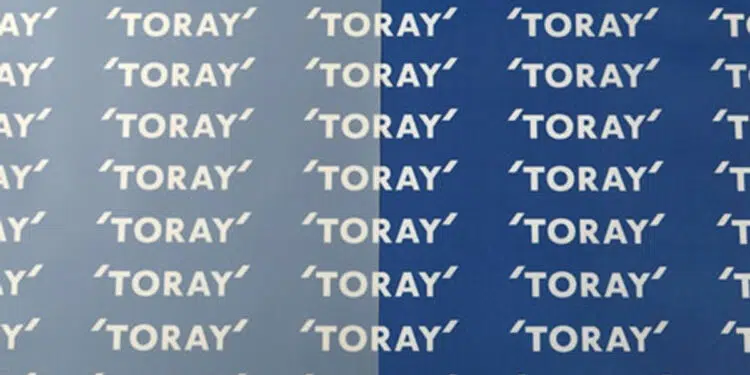Toray Industries, Inc., announced that it has developed a new film for 5G communications. The film offers excellent transparency, heat-resistance, flame-retardancy, and dielectric performance.
Wide-ranging prospective applications include transparent 5G antennas, transparent flexible printed circuit boards (see Glossary note 1), transparent heater substrate materials, and other electronic components. They would also encompass construction materials that benefit from the film’s transparency and flame retardancy, and process release films requiring chemical and heat resistance to ensure visibility for inspections and positioning. The company has begun providing samples to users, and will keep pushing ahead with R&D to accelerate commercialization.
5G technology offers ultra-fast communications for broadband cellular networks but also requires numerous antennas. That is because it uses higher frequency radio waves with short ranges. This situation propelled efforts to explore transparent antennas with good visibility and design that can be installed in all sorts of locations. Existing transparent circuit boards employ polyethylene terephthalate film and transparent polyimide film because they are light and unbreakable. However, their dielectric loss tangent (see Glossary note 2) are high, causing large signal losses in 5G communications.
On the other hand, the Toray-developed Torelina®, is ideal for 5G circuit boards because of its outstanding heat resistance, flame retardancy, electrical insulation, and consistently low dielectric loss tangent in varying temperature and humidity conditions. Torelina® is the world’s only bi-axially oriented polyphenylene sulfide film (see Glossary note 3). However, the film is opaque, with the typically yellow tinge of heat-resistant polymers. That is because tiny voids inside the film scatter light and result in low transparency.
Toray therefore combined its polymer design and proprietary particle dispersion technologies to eliminate these voids. It thereby reduced the yellow tinge and significantly increased film transparency without compromising performance benefits. The haze (see Glossary note 4) of this highly transparent polyphenylene sulfide film is comparable to that of polyethylene terephthalate film. Used in transparent 5G antennas, Toray’s new film would help stabilize 5G communications by cutting signal losses under different temperature and humidity conditions and improve visibility and design.
Toray will continue leveraging its core technologies of synthetic organic and polymer chemistry, biotechnology, and nanotechnology to research and develop advanced materials that transform societies in keeping with its commitment to innovating ideas, technologies, and products that deliver new value.
Glossary
- A flexible printed circuit board incorporates electrical circuits formed on a flexible thin, soft, insulating base film laminated with copper foil or other conductive metals.
- Dielectric loss tangent quantifies electrical energy losses. Applying high-frequency waves to insulating resin converts electrical energy to heat, resulting in energy losses. A lower value means a lower electrical energy loss.
- Polyphenylene sulfide is a super engineering plastic with outstanding chemical resistance, flame retardancy, electrical insulation, and long-term heat resistance. This crystalline resin has a melting point of 280°C.
- Haze refers to the degree of light scattering. A lower haze means less scattering and greater material transparency.






























